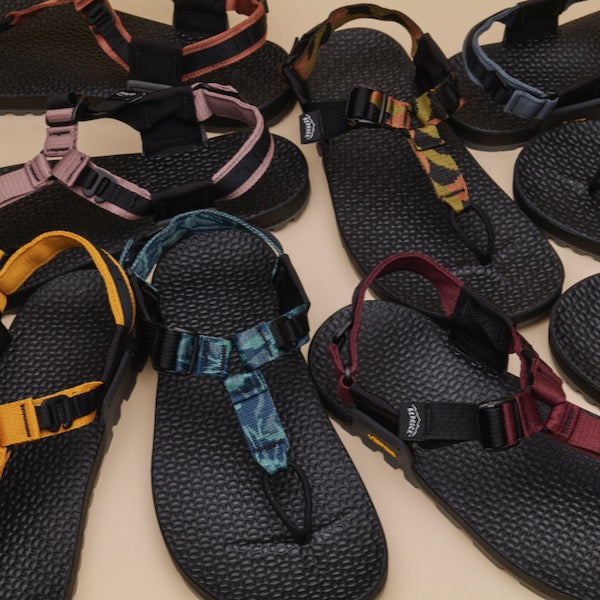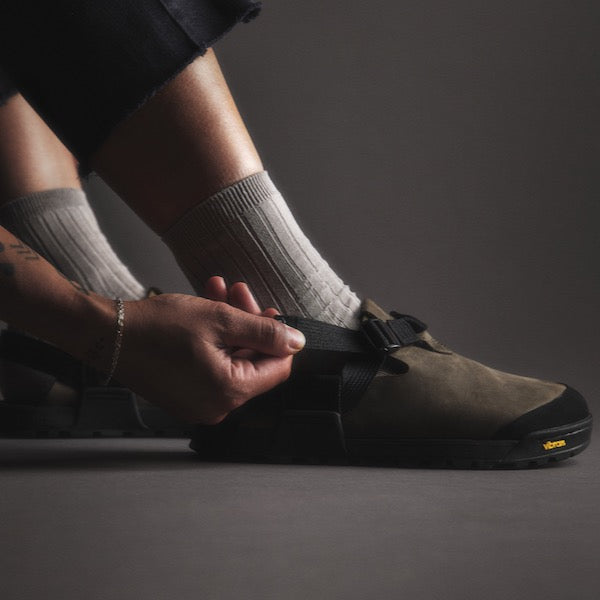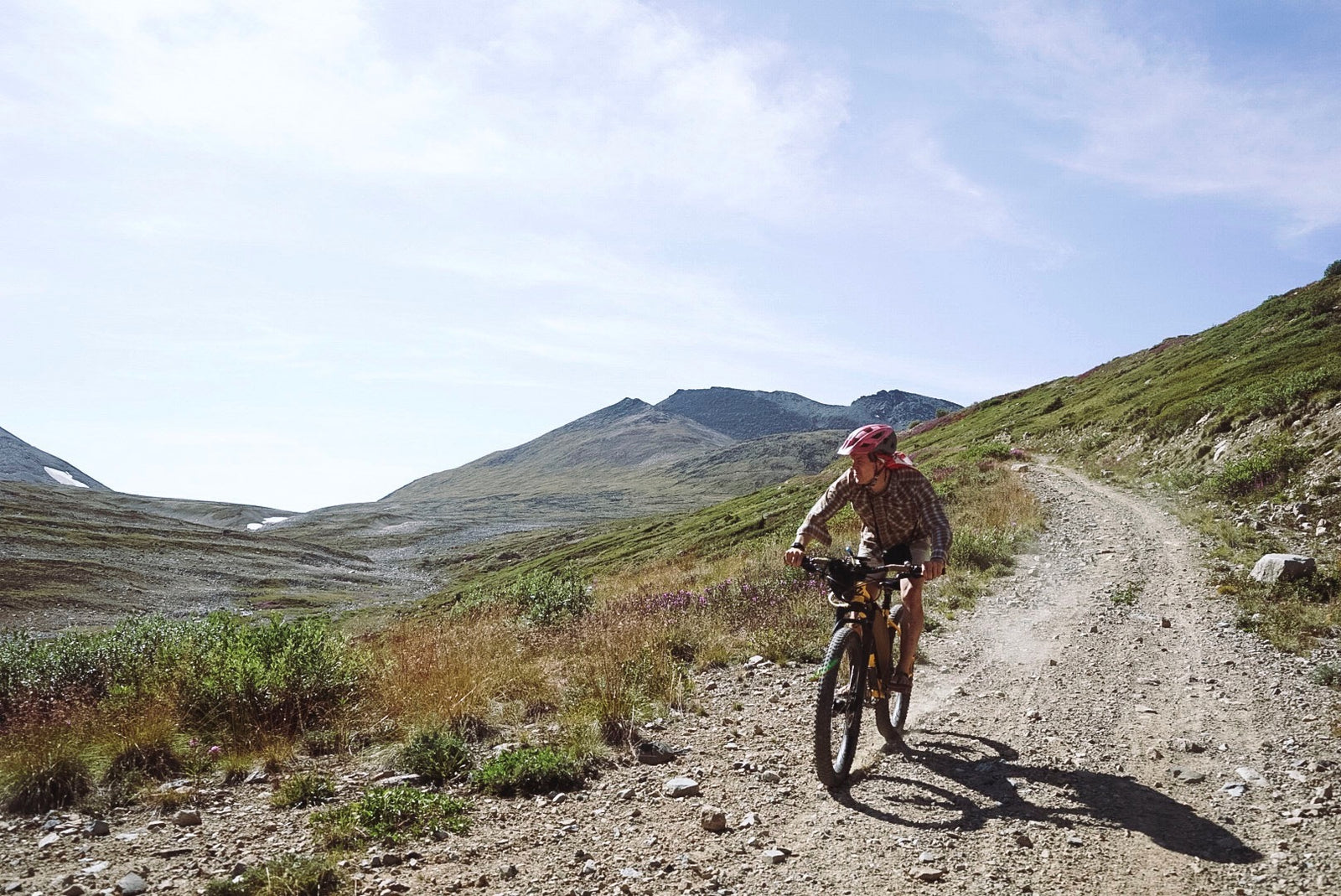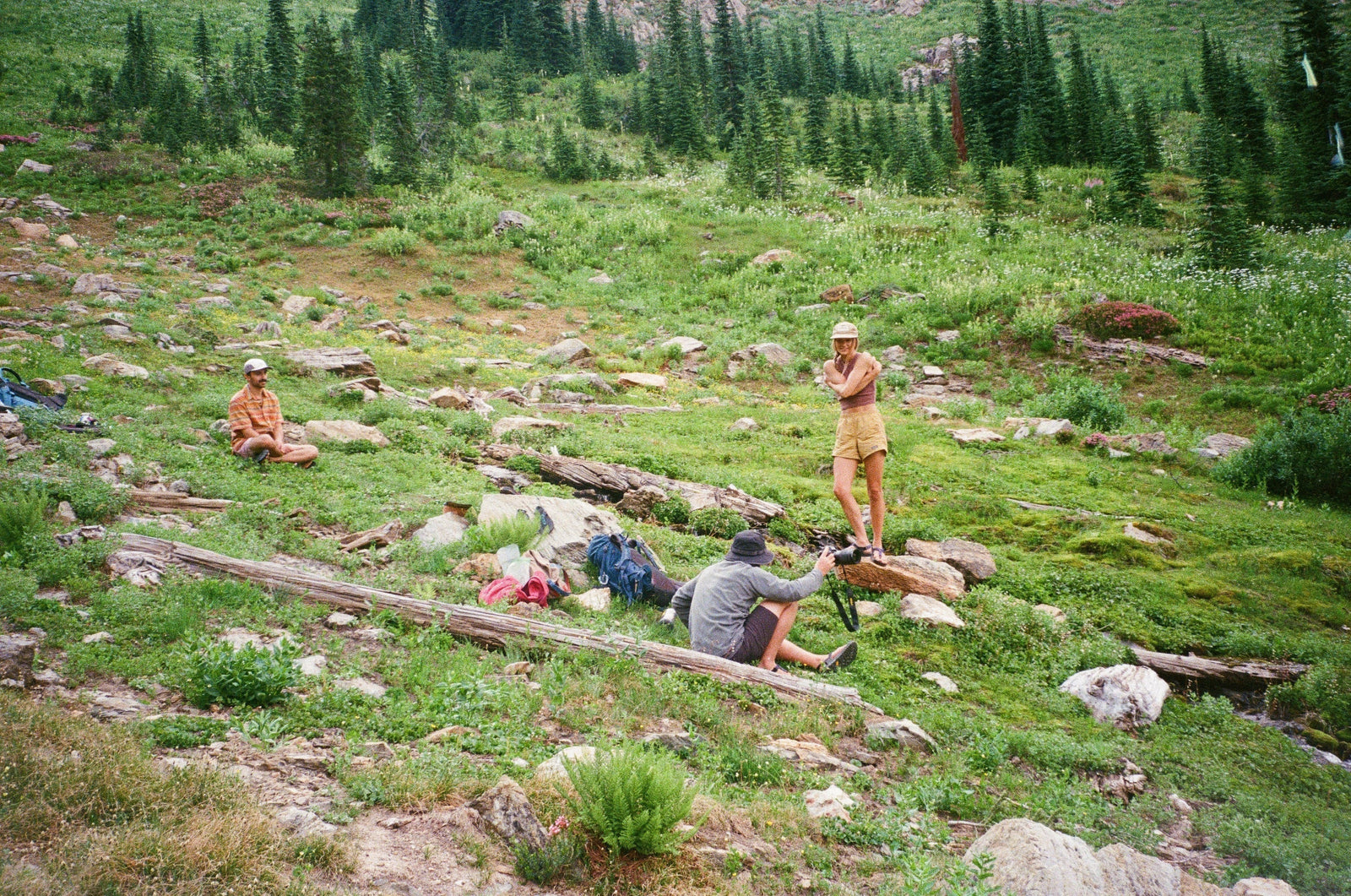This guest post by writer Dan Stranahan explores Yukon mining terrain, the effects extraction leaves behind, and some hope for the future conservation. Checkout Dan's website for more of his writing and photography.
Writing and photos by Dan Stranahan. Additional photos by Sophie Degroot.
Part I: New Conceptions of The North

Remains of The Big Thing silver mine, Montana Mountain Basin. Photo: Dan Stranahan
I always listened intently when crusted sailors and fisherfolk left Port Townsend, Washington (where I was raised) for Alaska, and returned with tales of beauty, self-reliance, creativity…tales that put the Tuf in Xtra-Tuf, (the unofficial state gumboot of Alaska). But I’m not here to tell you about how rugged and stubble-inducing the last frontier is, because you’ve probably heard that story. When I drove north in April, I entered a place that was far more. In fact I found Alaska to be just as much for the sandal dweller as it is for gumboots, but more on that later.
I spent my summer working at Sockeye Cycle Co. in Skagway, at the northern end of the Southeast Alaska panhandle. I guided bike rides for work and learned much, much more about the area through my job than I may have researched on my own - but the more I learned, the more I wanted to know.

Wide open space in the Canadian Interior. Photo: Sophie Degroot
Moving inland from Skagway and crossing the Coast Mountains, in 20 short miles the forest goes from damp and temperate (like Washington State’s) to the coniferous, boreal forests of the vast Yukon Territory. It reminded me of Bend, Oregon: dense Lodgepole pines replace mossy Sitka spruce and Western hemlock, and the sun shines far more than it does near the sea.

Yukon singletrack, showing signs of fall in late August. Photo: Dan Stranahan
For thousands of years, The Indigenous people of Northern Southeast Alaska, The Tlingit, (pronounced klink-it) would make the trek over the coast mountains to trade goods like fish oil for things that could not be found along the water, like Caribou hides and copper. Today, the Alaskan ‘wilderness’ still contains human activity, and is not wilderness by John Muir’s definition - devoid of the indigenous peoples that he saw as tainting an otherwise pure landscape. Alaska and the Yukon are rich with ethnic diversity and people whose existence is deeply intertwined with the land, whether it is a caribou hunt or salmon run. Point to any environmental issue in the area, and you will see it is also very much a human one.

Old silver mining cabins still standing above treeline. Photo: Dan Stranahan
Part II: Montana Mountain
The nearest inland trading hub from Skagway is a small town called Carcross, short for Caribou Crossing. Carcross is the home of The Tagish People, who in the early 2000’s were looking for a way (other than resource extraction) to revitalize their economy and build stronger local connections to the land. The history was there: many of The Tagish’s old hunting trails meander the slopes of Montana Mountain, just behind Carcross. In the 1900’s, the trails were reworked into access routes to a short-lived silver mine that was built high up on Montana Mountain. However, many trails were abandoned after the mine closed. In 2005, the Carcross-Tagish First Nation (CTFN) launched it’s plan to slowly rebuild the forgotten singletrack and dirt road network into a world class collection of mountain bike trails, and that they did.

Sophie drops in to the long and varied Mountain Hero singletrack descent. Photo: Dan Stranahan
Especially unique is the ‘Singletrack to Success’ program that was put in place to build and maintain the trails. The program, run by the Tagish employs local youth to build and repair the Montana Mountain trails every summer. After several years the crew had caught the attention of filmmaker Kelly Milner, and in 2016 a short documentary calledShift was produced to tell their story. In such a small community, I was glad to see local youth working as bike mechanics at a thriving rental service, and riding with serious skill and style on the trails that they built themselves!

Mountain Hero, looking toward Montana Mountain and Big Thing Creek. Photo: Dan Stranahan
Visiting Carcross for the first time, I immediately noticed the massive loop that diverged from the main trail network, climbing high toward the peak of Montana Mountain and dropping back down to the lakeshore near Carcross. This was the Mountain Hero Trail, one of two IMBA epics in the Yukon and Alaska. Spanning 30 miles and 5,000ft of gain, the route is a lovely overnighter or a solid day-sadly we only had time for the latter. On a sunny mid-August morning, Sophie and I finally got the chance. It was warm, clear, and no time for Xtra-Tufs.

Feeling the heat and looking forward to the crisp snowmelt of Big Thing Creek Photo: Sophie Degroot
Shortly after leaving the car we spot a sign near a fenced off area that reads:
“Warning! Some surface soils at this mill and tailings site (tailings are a bi-product of ore processing) contain high levels of arsenic and heavy metals. Do not use for recreation, or food/medicine harvesting.”
Ouch. The site appears more recent than the century old silver mines higher up, and I wonder what type of mine it was. In this context, it is obvious to see how the after effects of mineral extraction can disproportionately affect tribes like the Tagish who depend on hunting and recreation.

Sophie moving up the last big climb, almost to the singletrack. Photo: Dan Stranahan
The old mining site leaves me pondering how damage can be caused so quietly, yet have such a lasting, tangible effect. The track takes us further uphill, away from the sign. We crawl above the treeline, into the alpine basin of Montana Mountain and the road becomes shaley and narrow, hardly etched into the rocky hillside. The warm breeze filters between my toes, everything is quiet.

Ruins of the Sam Mcgee silver mine at the top of the last climb. Photo: Dan Stranahan
In nearby Haines Alaska, a Canadian company called Constantine Mineral Resources is in the process of permitting a sulfide mine where the tailings pile would need to be contained ‘in perpetuity’ in order to protect nearby watersheds. No Sulfide mine in history has ever successfully contained a tailings pile from leaking into nearby waters. The watershed in this instance is the Chilkat River. It is one of few rivers all five species of salmon can call home, and a major fishery for the indigenous Tlingit, Haines locals and commercial boats.

Sophie sips from the clean, clear Big Thing Creek. Photo: Dan Stranahan
We begin a fast descent through the alpine basin, racing toward old mining ruins from the early 1900’s (these ones non-toxic). The rusting steel, and ruins of wood and stone are familiar materials, intriguing and approachable.

In Bloom. Photo: Dan Stranahan
In sharp contrast to the sign we saw below, the ruins feel like an asset to the experience and not a limitation. It gives me hope for conservation, the idea that natural resources can be used wisely if the effects of their extraction are considered more carefully; if more people have a seat at the table.
We finish the descent at the lakeshore, dusty, thighs burning, exhausted. From here it’s only an 8-mile pedal back up the main road. I check the time - we’ll get food before the shops close. I’m excited for the large heap of poutine. I look back up the gulley, and see the effects of different beings on the land: miners, mountain bikers, wild animals. I’m grateful that we can still ride up to the mountain and touch it.

Sophie, focused. Photo: Dan Stranahan
Notes:
If you’d like to contribute to the Single Track to Success program, you can donate to the Carcross/Tagish Development Corporation which manages the crew. For more information and to donate, clickhere.
If you’d like to contribute toward advocacy countering the Constantine Mine near Haines and learn more, Check out the film Rock, Paper, Fish and/or donate to the Tlingit/Chilkat Indian Villagehere.
*Photos taken on Carcross/Tagish, and Tlingit Land
* Additional photos by Sophie Degroot, @_digroot














Daniel Stranahan
November 14, 2019
My pleasure. It was incredible, and there is just so, so much to explore. Worth the long trip…Cheers!